Quite often, beautiful plants called hydrangeas can be seen in the plots. They have lush flowering, and beautifully decorate the yard. Often, hydrangea leaves turn yellow. More details about why this happens will be discussed in this article.
Varieties of yellowing leaves
Hydrangea leaves turning yellow can occur in different ways. Leaf plates may completely turn yellow, and then fall off. There are situations when the Hydrangea leaves turning yellow, and the veins remain green. An equally common phenomenon is the yellowness of the edges of the leaves.

Hydrangea leaves turning yellow: causes
If you notice that Hydrangea leaves turning yellow and falling off, this may indicate waterlogged soil.
Similar phenomena can occur if the culture is frozen or lacks mineral components when bud formation and flowering begin.
If the Hydrangea leaves turning yellow at the bottom, you should not panic. After all, this is a normal process associated with plant aging.
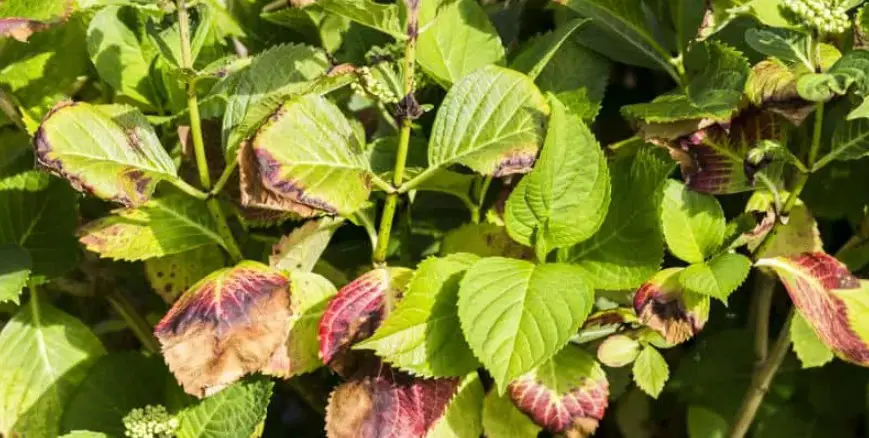
Green veins on yellow Hydrangea leaves
If you notice green veins on yellow leaves, the plant faces iron chlorosis. Iron chlorosis occurs if the culture is deficient in iron. You can add chelated iron diluted in water to fix the situation with iron chlorosis.
The yellowness of the edges
If you notice that only the edges of the Hydrangea leaves turn yellow, you should apply a fertilizer that contains nitrogen and iron. It is the lack of these components that leads to the fact that the lower leaves turn yellow.
Yellow Hydrangea leaves: other causes
Quite often, gardeners wonder, why are my Hydrangea leaves going yellow? Hydrangeas are considered rather whimsical plants.
Often there are situations when buds do not form on the bushes. This is due to several reasons, however, in most cases, this is due to a lack of fertilizer.
Hydrangea plants are not whimsical in nutrition. However, a large number of nutrients are required for them to bloom.
They must enter the soil constantly. They provide a culture with the opportunity to survive. If you notice that there are not enough nutrients in the soil, you should correct the situation.
It is best to use organic fertilizers. The best option is compost. The pH of the soil should also be checked. It is best to do this in early spring. Special soil testing kits on the market help determine the number of missing components.
Hydrangea plants are often deficient in iron, nitrogen, and magnesium. This is what causes the yellow leaves.
Hydrangea leaves to turn yellow because of iron deficiency
Often, Hydrangea plants lack iron. This is evidenced by the situation when new leaves are already growing yellow, and the veins remain green tint. This is called “chlorosis”.
The process of turning yellow is caused by the leaves not having enough chlorophyll, which is required for photosynthesis.
Correcting this situation is not difficult, and even a beginner can handle it. It is best to immediately add chelated iron. The use of organic substances, which contain a lot of iron, is allowed.
Try to work according to the instructions on the package. If you make a mistake, you can add too much iron, which will cause other problems with the flower.

Hydrangea leaves to turn yellow because of nitrogen deficiency
Quite often, Hydrangeas lack nitrogen. The plant must grow properly. If there is not enough nitrogen in the soil, the Hydrangea leaves turn yellow and growth stops. Old leaves become yellowish-green.
You can correct the situation of turning yellow if you make manure or compost. These substances contain a high concentration of nitrogen, so you need to work carefully.
If you add too much nitrogen, the leaves on the bushes will grow. However, beautiful and lush buds will not form. And the Hydrangea plant is famous for its lush flowering.

Hydrangea leaves to turn yellow because of magnesium deficiency
For the plant to grow and develop properly, it needs magnesium. If it is not enough, you can notice yellowness between the veins on the leaf plates. And the veins themselves will remain green. This phenomenon is called interveinal chlorosis.
To compensate for the lack of this component, magnesium sulfate should be added. Follow the instructions on the packaging. On average, 2 teaspoons of the product will need to be diluted in 1 gallon of water.

Yellow leaves because of soil depletion
Often, Hydrangea leaves turn yellow if the soil is not sufficiently filled with microelements.
Because of this, the immune system of the Hydrangea plant cannot develop properly, and various unpleasant events can attack it.
It is recommended to apply complex fertilizers to the soil regularly, in which mineral components predominate.
It is necessary to apply fertilizer even during planting a flower. Remember to keep an eye on acidity parameters. Hydrangeas will feel good if the indicators are 5.5-6.5 pH.
It is also important to assure the fertility of the soil. It should contain earth, humus, peat, and sand. Components should be taken in a ratio of 2:2:1:1.
You can add some manure that has started to decompose. Before the onset of spring, urea should be added to nourish the Hydrangea plant.
When the plant begins to form buds and bloom, fertilizing should be carried out three times a year. Nutrient components from the soil tend to be depleted. That is why they need to be replenished every year. For new leaves and buds to form, many nutrients are required.
If you do not apply fertilizer, the plant will not be able to bloom in the coming season. Fertilizers should contain potassium sulfide and superphosphate.
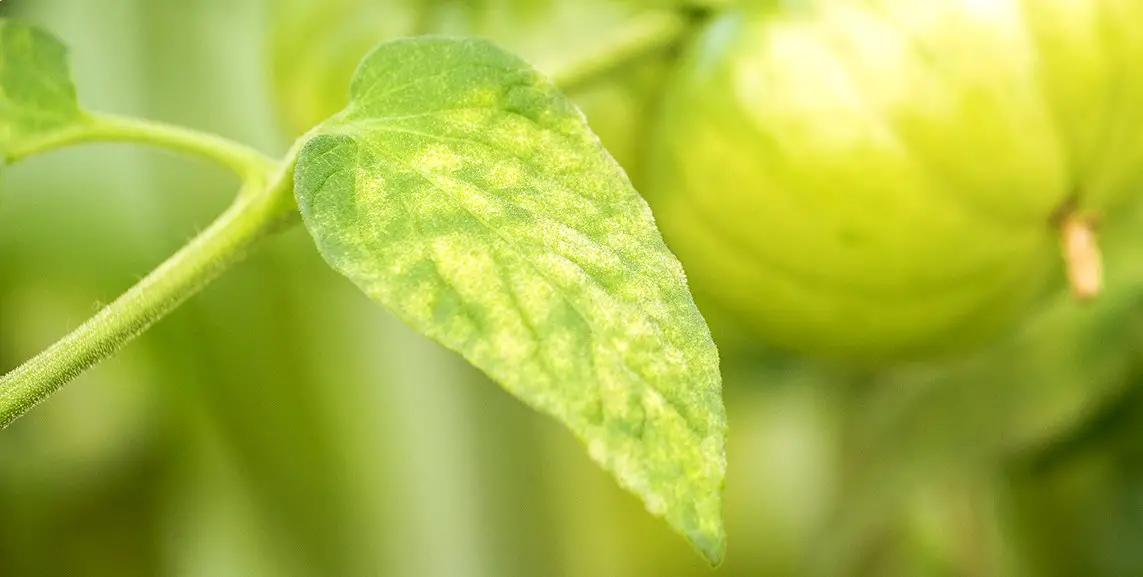
Hydrangea leaves to turn yellow because of low soil acidity
Quite often, the Hydrangea plant turns yellow leaves if it grows on a substrate with high levels of alkali.
If the pH is not correct, the Hydrangea leaves turn yellow. Hydrangeas prefer acidic soil. That is why, before you start planting, you should conduct a soil test.
To do this, there are special devices, the cost of which is low. You can also take the soil to a special laboratory, where they can do a complete analysis, pointing out the missing elements. If your soil is not acidic enough, fixing the situation is not difficult.
To make the soil more acidic, water with citric acid or vinegar. It is necessary to dilute the components at the rate of 5 ml per 1 liter of water. To retain moisture in the soil, you can carry out the process of mulching.
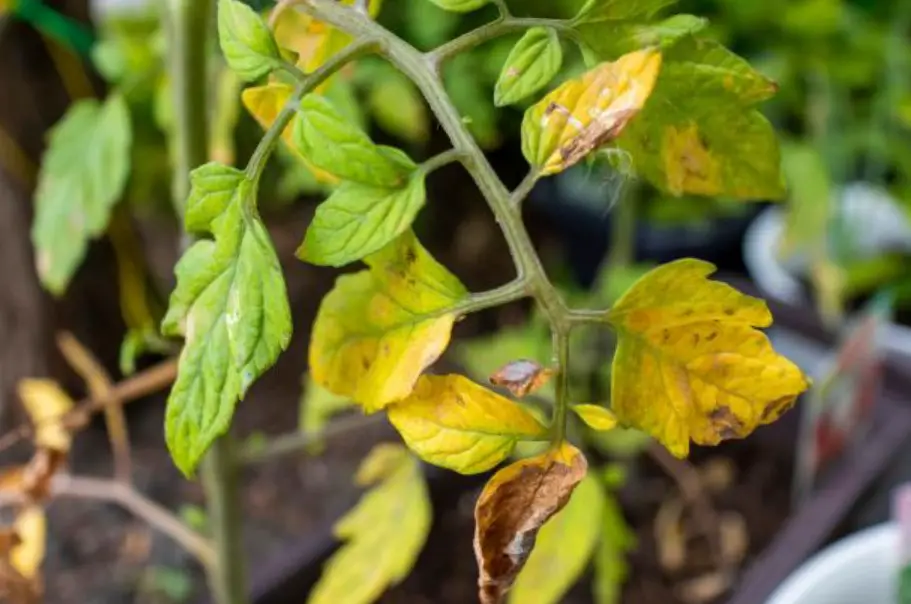
Defeat by diseases
Hydrangeas, despite their developed immunity, can be affected by some diseases.
Leaves turn yellow because of Root rot
This disease is caused by fungi, and it affects the root system. Often root rot happens if the plant is watered abundantly, or the drainage is not sufficiently formed. The first sign of the fungal disease is yellowing leaves.
If there is a suspicion of this disease, you will have to work quickly. First, you need to remove the bush from the soil and dispose of it.
After that, compost and other organic matter are introduced into the soil. If you properly care for the bushes, you can prevent root rot.
Viral mosaic
This disease can also cause the yellowing of leaf blades. Hydrangea leaves
may be spotted. To prevent this disease, all tools should be disinfected after work.
Ring spot virus
This disease often provokes a yellow pigment on the leaf plates. Spread is by nematodes. Often the Hydrangea leaves are completely deformed. To prevent ringspot virus, nematodes should not be allowed to develop on bushes.
To do this, regularly treat with insecticides. You can also plant special plants nearby that will attract predators that destroy nematodes.
Problematic watering
Quite often, gardeners wonder, are yellow leaves on Hydrangeas normal? This is not the norm. In most cases, the yellowing of the Hydrangea leaves is due to improper watering. You can add too much or not enough water and the plant will suffer.
If you water the plants too much, they will suffocate, and their leaves to turn yellow. Hydrangeas prefer to grow when the roots are slightly damp rather than flooded with water. Flowers need drained soil, as already mentioned. If this is not done, the roots will begin to rot.
Some wonder, how often should you water your Hydrangeas. The frequency of watering depends on environmental conditions. Therefore, you should focus on the condition of the soil. Watering should be carried out if the soil is already dry. Pour in some water and wait for it to soak in.
If water is not absorbed, stop watering. If the water quickly sinks into the ground, you can add a little more. To prevent over-watering, abundant and rare watering should be carried out.
Quite often, the question arises, what does overwatered Hydrangea look like? In most cases, this is indicated by yellowness and excessive softness of the leaf plates. Hydrangea leaves may wilt and droop, which indicates stress.
Wrong light
Hydrangeas must receive enough light. It is important to plant plants in a place where partial lighting prevails. If the bushes are under the direct scorching sun, yellowness will be caused by the leaf scorch.
Do not plant in areas where shade prevails. After all, this will also negatively affect the development of Hydrangeas. To solve the problem with the leaf scorch, you should choose places where there is partial light from the sun during the day. 6 hours of abundant lighting will be enough.
You can plant the plants in a place that is illuminated by the midday sun. Thanks to this, the flowers will be in the shade and cool in the morning.
Sudden change in temperature
If the ambient temperature changes rapidly, Hydrangea leaves will turn yellow. Hydrangeas need to be constantly protected from drafts, windy weather, and cold. If this is not done, the bushes will turn yellow.
To solve the problem, you can transplant the Hydrangea to a safer place. This may be the area near the house or barn.
This will create additional protection from wind and draft. If you planted a Hydrangea in a pot, you need to transfer it to the house for the winter.
Causes of yellow leaves in different types of Hydrangeas
As you know, Hydrangeas can be of different types. All of them can turn yellow for various reasons. More on this will be discussed later.
Paniculata Hydrangea
This species is covered with yellow leaves due to improper care. The plant prefers to grow and develop in a temperate climate. Flowering occurs throughout the summer.
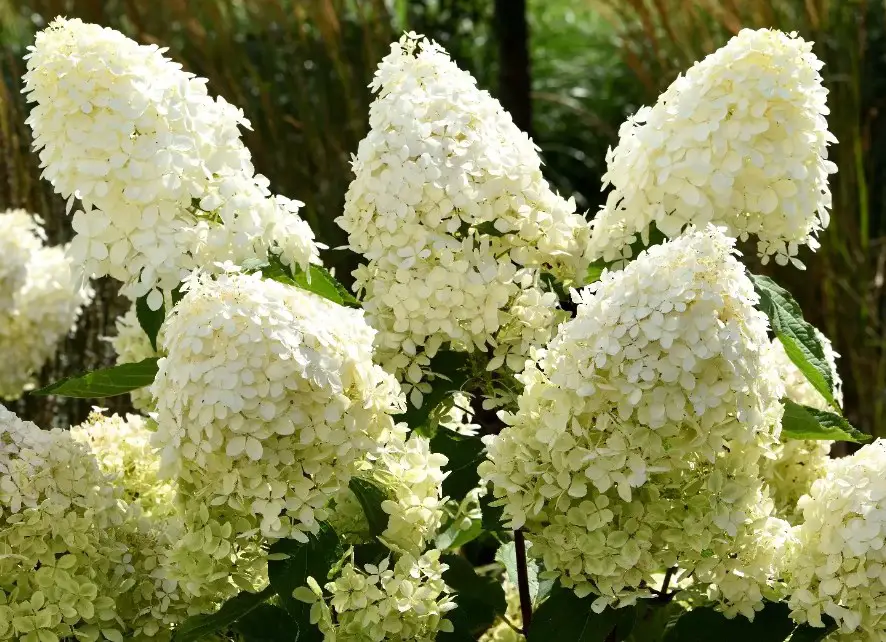
Hydrangea with large leaves
This view will be appropriate if you want to plant greenery on your site or decorate a room. You can care for this culture in the same way as for other species.
Flowering begins in spring and lasts until summer. The yellowing of the leaves is caused, in most cases, by fungal disease.
Tree Hydrangea
This is a fairly popular and beautiful view. The yellowness of the leaves is caused by improper care.
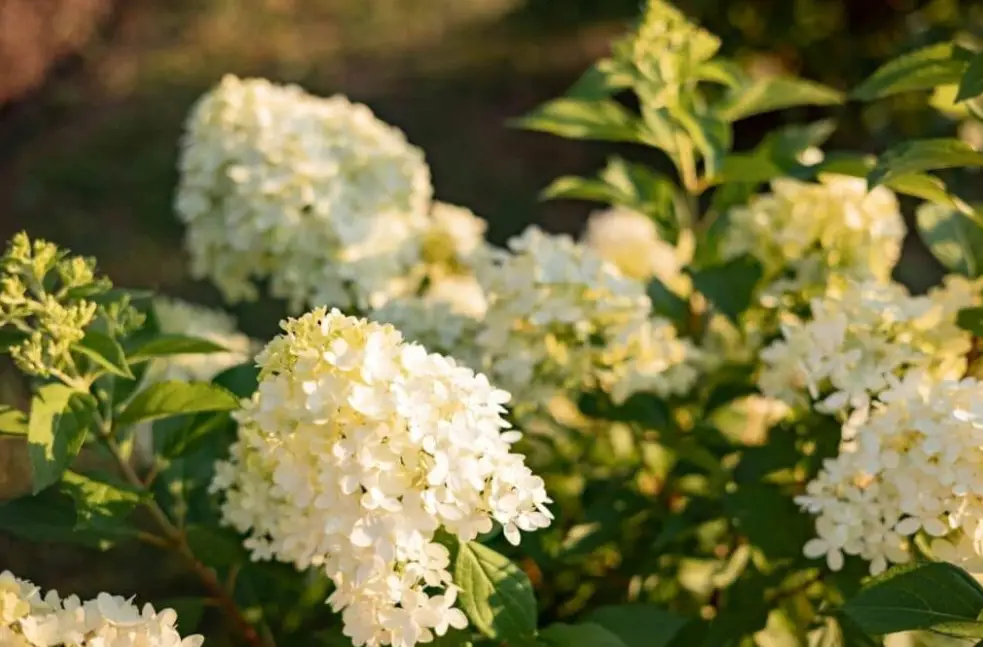
Fertilization rules if the leaves turn yellow
As already mentioned, one of the most common causes of yellow leaves on Hydrangeas is a lack of nutrients. That is why it is necessary to apply fertilizers on time and correctly. In the spring, it is recommended to make mixtures that contain a high nitrogen content.
This will promote the growth of green leaves. In summer, fertilizers should be preferred, which include potassium, nitrogen, and phosphorus. This will have a positive effect on the quality and abundance of flowering.
In autumn, substances with a high content of potassium and phosphorus should prevail. They will help the plant prepare for winter. In case of iron deficiency, chelated iron diluted in water should be added.
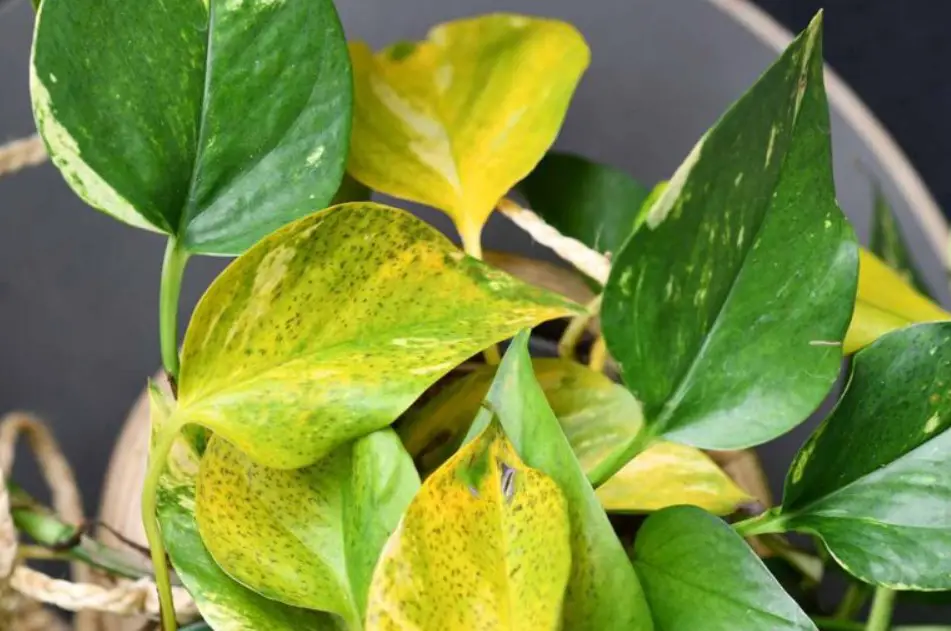
Other leaf problems
It should be noted that the yellowness of Hydrangea leaf plates is not the only problem. More about other adverse situations will be discussed below.
Leaf pallor
Often, Hydrangea leaves become pale. This is caused by powdery mildew. It is necessary to cut off the infected areas so that they do not provoke the death of the entire bush. You will also need to use fungicides.
The blackness of the leaves
If you begin to notice black spots on the yellow leaves, then the wrong water is used for irrigation, or the plants are constantly under direct sunlight. If you restore the right conditions without too much direct sunlight, the bush will quickly come to normal.
Leaf curl
If the yellow leaves began to curl, then the bushes are affected by pests. First, you need to inspect the bush, and then proceed with the treatment with insecticides.
Prevention of yellowness of leaves in Hydrangea
To prevent Hydrangea leaves from turning yellow, a few basic recommendations should be followed. The main tips include:
- Search for a place where diffused sunlight prevails. This is where the landing should take place.
- Control the moisture level so that the soil does not dry out and is not too wet.
- The use of settled water for irrigation, which has room temperature.
- When the rainy season begins, bring wood ash under the bush.
- Control soil pH.
- Apply complex fertilizers when buds begin to form.
- Treat bushes with Bordeaux solution every month. This is an excellent prevention of fungal infections and pests.
- Cut off diseased and old stems so that the plant can rejuvenate.
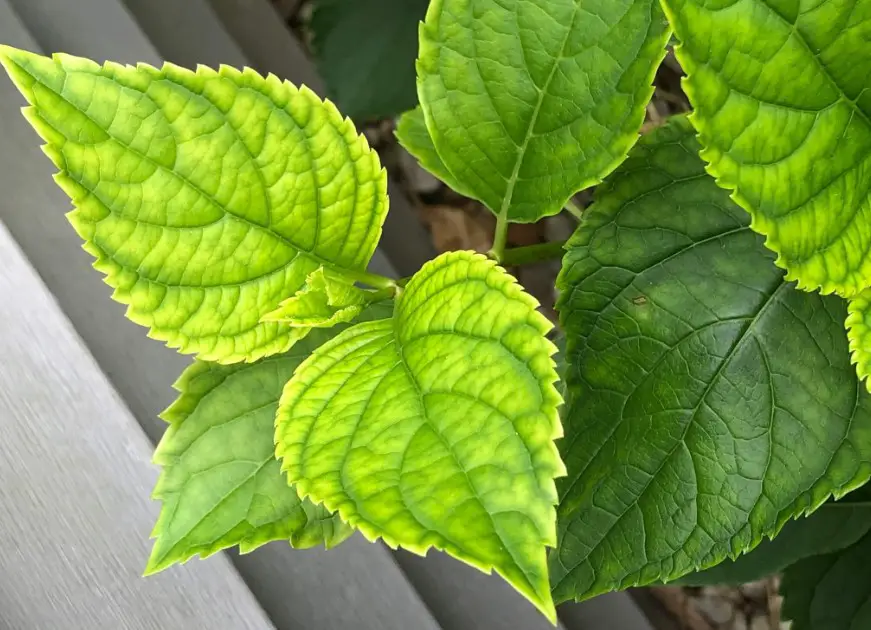
Results
As you can see, yellow Hydrangea leaves can appear for various reasons. If you carefully care for the bushes, you can avoid this problem. If yellowness has already been noticed, you should find the cause and try to eliminate it.
Read also: How to Overwinter Lantana (2 Incredible Ways)
- Why Are There Still No Tomatoes in My Tomato Plants? Let’s Fix the Issue! - July 13, 2023
- Water Propagation White Stuff on Roots: Everything You Should Know! - July 11, 2023
- String of Dolphins Drying Up: Solved! - July 11, 2023
